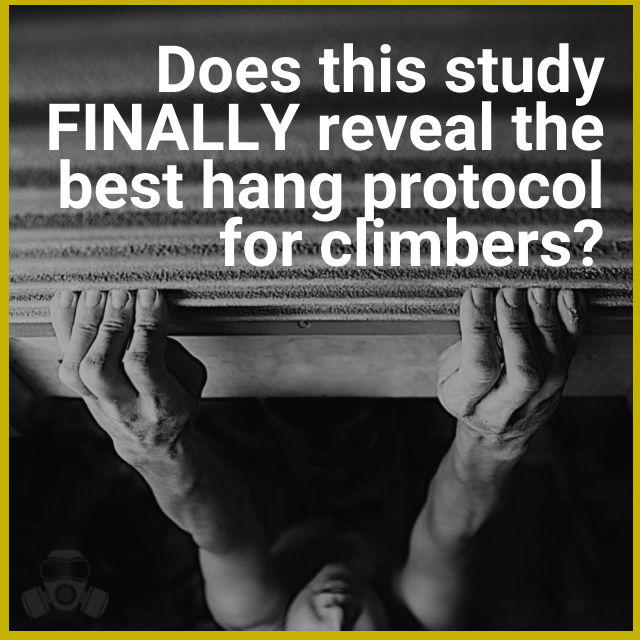Review: bäm! board from bäm! climbing
When it comes to training, and training for climbing in particular, it's incredibly rare that a product hits the market that I really feel is a game changer. On average, most products are just a reshaping of another, equally useful (or useless) product. Many of these "NEW!" "AMAZING!!" "GUARANTEED!!!" products quickly end up as toys for circus tricks or drunken contests. When it comes to hangboards, it seems that for the most part, they've gone in one direction: bigger but sleeker, with a larger selection of holds. With the exception of the "Transgression and Progression" boards by Eva Lopez, these bigger boards provide little to no added benefit. In the rare case that boards get smaller, they often become even more useless, providing grips that will be useful to a very, very small slice of the population. Frankly, hangboards today often end up with grips so big that the group who could possibly benefit from them should be learning to climb instead of learning to hang.
But then...
bäm!

And just like that, things done changed.
How about we get straight into this?
The Stats:
Where: bamclimbing.com
Price: $149.00 (**At time of review. Prices subject to change.**)
Height: 9 cm (not including mounting board)
Width: 58 cm (not including mounting board)
Depth: 5 cm (not including mounting board)
Mounting Hardware: Included
Mounting Board: Included (US only)
Material: Sustainably sourced wood (appears to be oak), with metal mounting brackets.
The Grips:
One center slot, 14 cm long by 1.75 cm deep.
Two 4 finger pockets, adjustable by 2mm from 3.5 cm to 0.5 cm, from 0-30 degrees.
Two 3 finger pockets, adjustable by 2mm from 3.5 cm to 0.5 cm, from 0-30 degrees.
Two mono pockets, adjustable by 2mm from 3.5 cm to 0.5 cm, from 0-30 degrees.
Two flat slopers/pinches, adjustable from 15-45 degrees in 10 degree increments.
Two flat slopers/pinches, adjustable from 20-50 degrees in 10 degree increments.
One center convex sloper/pinch, adjustable to 30 degrees overhanging.
But numbers can only tell you so much... what did we think?
Fresh out of the box, it's a thing of beauty. It's immediately obvious that much thought went into the design and use of this board, and that the materials are top notch. Like all simple innovations, I was amazed I'd never thought of this myself! As it came in the same natural wood tone colors as my own Bare Naked Hangboard, I have to highly cosign the color choices. The thing just looks great.
If you're anything like me, when you get a new to(y)ol you like to get it in working order AS FAST AS POSSIBLE. This means shortcutting by all means necessary. I urge you not to do that with this board. Hanging it takes a little more care and precision, but still isn't difficult. Actually, we chose the more difficult of the mounting options by removing the mounting board, since we had a perfect place for it only if it lacked the extra thickness of the mounting board. Just be sure you ignore your male tendencies (or listen to your female ones), and actually read the instructions. You'll be glad you did.
Once up, the genius of the board became even more obvious because it felt just like hanging on any other wooden board with perfectly rounded edges. See, what Ben Spannuth (the mind behind the board) did here was, he reinvented the wheel but kept the joy of driving. The simple idea of hanging on a friendly wooden edge remains wholly intact. So what's so exciting about it?
What's so exciting are the fine adjustments you can make, all in this compact sexy board.

As is mentioned in the stats, and as you can see from the photo, the board is adjustable in two ways: the depth of the pockets, and the overall angle of the board itself. These simple options give you a much larger set of grip sizes and angles. I tried to come up with the math to figure out how many options that is, but I got lost. Twice. Maybe one of you can help me out? Anyway, it's a lot. Somewhere around 16 sizes of each adjustable grip, times four angles for each grip, plus all three slopers and the center slot. Mind boggling. 208 options, not including using different teams of fingers? Anybody?
You get the point.
About the depth adjustments: this is my favorite feature on the board, but it's also the one I can find fault with, if I'm looking for faults.
As far as training goes, being able to fine tune the edge depth is key. It provides a much more measurable method of progressing to smaller edges than most boards. The only drawbacks I found were that several of the people using our board had a hard time knowing where exactly the board was set to, despite the 2mm hashmarks. The knobs don't have a clear way of determining that you are on center, so it's something of a (very slight) guessing game. And because the knobs turn, there is the tendency to get slightly off when tightening. Again, I'm reaching here. These are minor issues, and in no way dealbreakers.
There is, however, one possible dealbreaker. When a large group, like we sometimes have in The Engine Room, is training together, it takes time to constantly change the grips back and forth from person to person, and depending on the amount of people, can greatly lengthen a session. This is a popular board, and it wasn't uncommon for people to say, "Oh, I'll just use your size," to save time but thereby losing the benefit of the adjustable grip altogether. If it's just you and a partner? No problem at all.

Upon further inspection, there is an indentation in the three-finger pocket that I didn't fully grasp (no pun intended). I reached out to Ben, who explained that the slightly deeper section was to accommodate the longer middle finger, particularly in the two different two-finger teams, as you can see in the photo. While this is certainly nicer ergonomically, I'm not sure of its relevance. However, if I want to have a two-finger edge that doesn't have the extra room, then I can just use the four-finger slot, which is generally my own preference anyway. If you have a particularly long middle finger, then this feature might be one you really love.
The mono, like the other pockets, is nicely rounded and as comfortable as a mono can be. It provides the added lateral support that a pocket gives, which for me is a nice feature when using monos (that I don't like when training two fingers). This is largely due to my own weakness in monos, and my oddly strong two-fingers, so it's entirely possible that some will wish for a true two-finger pocket that provides the same lateral support.
The center slot? Well, I'm not entirely sure what it's for. In fact, I haven't even seen it mentioned in other reviews and I nearly forgot to mention it here. Maybe you could store a brush there to keep your chalk from building up. In fact, I think that's exactly what I'll use it for. Maybe it will remind people that hangboards need love, too.

I've made no secret of the fact that I'm not generally a fan of slopers and pinches on hangboards. I question the efficacy of simply hanging on slopers, beyond the mental component, because sloper climbing is so much about body position and path of movement. Can it help? Maybe. However, it's not likely that if you suck on slopers, you'll get much better by hanging on a board. Pinches are generally oriented in such a way that one can simply compress them to hang on, rather than have to use thumbs at all. To know how much of that is happening is virtually impossible.
That said, I know some people love slopers on hangboards, and these pinches are some of the best I've seen, due to their orientation. Having the ability to change the sloper/pinch angle by 5 degree increments to a very hard-to-hold 50 degrees, means that you get a lot of options in a minimal feature which normally would take up a ton of room. Brilliant. And to add to the nicety of the feature, the pins are held in place magnetically, to avoid having them wiggle out of their holes. Brilliant times two.
If I were designing it for the general population, I likely would have opted to skip the outermost sloper in favor of a warmup jug, but the 5 degree increments option afforded by that sloper is pretty nice, and frankly, the 3.5 cm depth of the slots is pretty darn big.
So more about the tilt feature: it's fun. But it's also new, meaning not much has been measured about it. I'm not sure how it will translate, if at all, to strength gains, but I'm anxious to try and find out. As you can see from the photo below, the full tilt of the board barely, if at all, changes the position of the hand when gripping. I'm not a science guy, but I sincerely hope someone who is tries to determine the actual effects of this type of training. It definitely adds a wrinkle to hangboarding that I'm excited to explore more (when I'm able to climb again!).

The Wrap Up:
While it's certainly on the more expensive side of the hangboard market, the "bäm! board" offers FAR more grip options than any other board I've seen, or can imagine, and in a much more compact and sexy package than even seemed possible. It's sturdily constructed with quality materials.
The radius on the edges is exceptionally comfortable, and honestly, it's hard to go wrong with a wooden board. If you're training at home or with a couple of friends, it's the only board you'll need, no matter what your hanging preferences are. If you train with a large group, it is a brilliant addition to what will surely need to be an array of boards.
With every other board I've used, more advanced climbers quickly max out on even the smallest rungs when using 4 fingers. With the angle changes available here, that's virtually unfathomable, so it won't become obsolete anytime soon.
Training on it was a joy, and I look forward to getting back to it. It's not magic. Your results won't skyrocket just because you buy it. What will happen is that you'll have the ability to more precisely adjust the load of your training, and in a sport with so many variables, that's a huge win.
As far as I'm concerned, this is the product of the year. Innovation of the year.












In a world where home training setups for climbing are increasingly important, saving space is key.